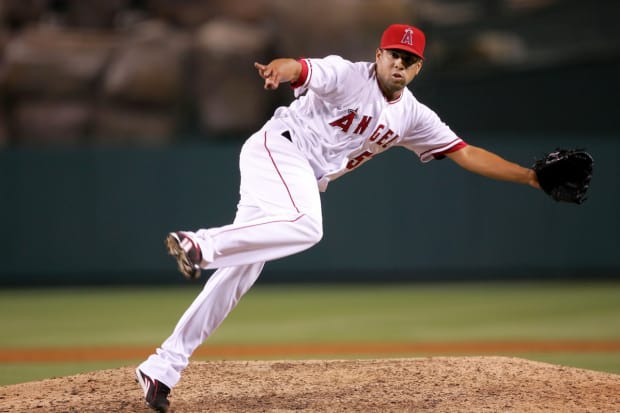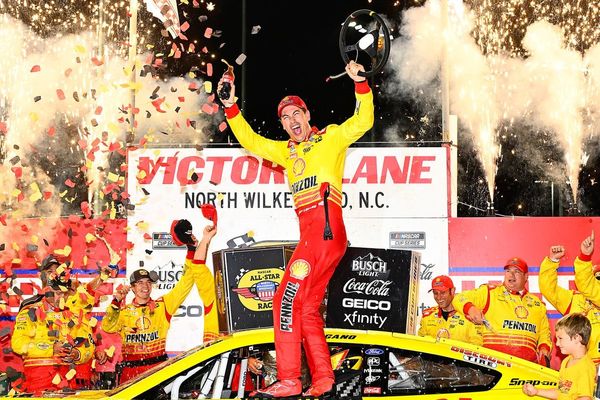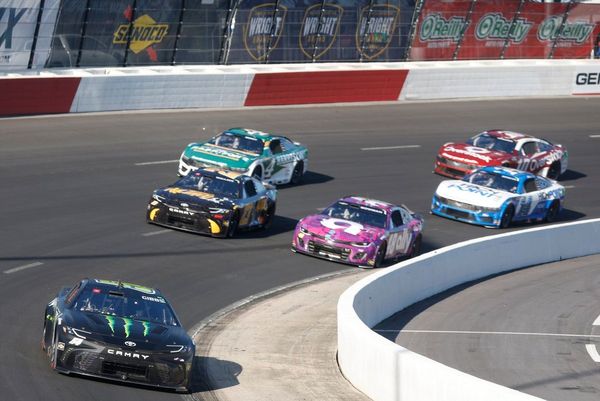For all intents and purposes, Francisco Rodríguez’s MLB career sprouted wings in the World Series and met its undignified end on a last-place Tigers team. In the 16 intervening years, the man known as K-Rod grew into one of the last of a dying breed: a lockdown, true-blue closer.
To evaluate Rodríguez’s candidacy is to examine the high bar that closers have to clear to make the Hall of Fame. But before we get to that, let’s first unpack the career of a player whose instantaneous rise to stardom gave way to a nearly unparalleled run of consistent longevity.

Gary A. Vasquez/USA TODAY Sports
Rodríguez signed his first professional contract as a spindly 16-year-old out of Venezuela and moved through the minor league ranks primarily as a starting pitcher. Arm injuries sent him to the bullpen, and as the then Anaheim Angels were in the home stretch of a franchise-record 99-win campaign, Rodríguez got the call and made his big league debut Sept. 18, 2002, at 20 years old.
In five regular-season appearances over a 10-day span, Rodríguez faced 21 batters. He struck out 13 of them, immediately earning the nickname that would stick with him throughout the rest of his career. That electric bite-sized debut earned him the role as setup man for an eventual World Series title run, during which Rodríguez struck out 28 of the 70 batters he faced—including three in the eighth inning of Game 7.
After spending two years as an overqualified setup man—a run that featured a 2.44 ERA and 218 strikeouts across 170 innings—K-Rod the closer was finally unleashed in 2005. In all, his Angels tenure produced one of the most impressive stretches by a relief pitcher in recent memory, and coincided with the franchise’s most successful era.
From 2004 to ’08, Rodríguez led the AL in saves three times, including an MLB-record 62 in ’08 that has yet to be matched. He had a 2.23 ERA and 200 ERA+ during that span, with three top-four Cy Young Award finishes and three All-Star appearances. The Angels made the playoffs four more times after that World Series with Rodríguez anchoring their bullpen.
That earned him a lucrative and ultimately ill-fated deal with the Mets. For the final seven seasons of his career, he bounced around on four different clubs, including two stints with the Brewers. He wavered in and out of the closer role during that time, and the second half of his career was marred by a pair of arrests.
The first occurred in August 2010, when he was arrested for assaulting the father of his then girlfriend in an incident in which he repeatedly punched the man and tore ligaments in his right thumb. He pleaded guilty to a third-degree assault charge and was ordered to attend a yearlong anger management course, along with fines surpassing $15,000.
In September 2012, Rodríguez was arrested again, this time for domestic violence and battery against his fiancé. The woman told authorities that Rodríguez struck her on the head, grabbed her by the hair and threw her to the ground, after which he kicked her repeatedly. Charges were later dropped when she and a witness left the United States and returned to Venezuela.
Eventually, Rodríguez returned to the majors after signing a minor league deal with the Brewers in 2013. He was traded to the Orioles that year but returned to Milwaukee the following season, earning back-to-back All-Star bids in 2014 and ’15 while tallying 126 saves from ’14 to ’16. After a disastrous first half in ’17 with the Tigers, Rodríguez was released in June and never again stepped on a big league mound.
Rodríguez’s historical standing among closers is difficult to argue against. He finished his career with 437 saves, fourth-most all-time behind three Hall of Famers: Mariano Rivera (652), Trevor Hoffman (601) and Lee Smith (478). Rodríguez is one of eight pitchers ever to post at least seven seasons with a sub-3.00 ERA and at least 60 games pitched. He has paired a sub-3.00 ERA with at least 40 saves in a season four times, a mark topped by only three other pitchers: Rivera (nine times) Hoffman (eight) and Craig Kimbrel (five).
Being fourth on the all-time saves list is certainly not nothing, but it isn’t everything. The term “save” originated in the 1950s as an informal label for the pitcher who finished a victory, regardless of the margin, but didn’t become an official stat until 1969. Researchers have retroactively applied the stat for pitchers whose careers predated its adoption, but its relatively new usage makes saves an imperfect measuring stick.
There are other ways of stacking up Rodríguez against his peers. JAWS, an advanced metric developed by Jay Jaffe of FanGraphs, is a good tool for measuring a player’s Hall of Fame worthiness, because it accounts for both career and peak performance. JAWS for relief pitchers, or R-JAWS, is calculated a bit differently than it is for pitchers overall, because of the workload differences between starters and relievers. Rodríguez ranks 12th in R-JAWS. The top five by this metric are all in the Hall: Rivera, Dennis Eckersley, Hoyt Wilhelm, Goose Gossage and Hoffman. Rodríguez ranks ahead of the other three HOF relievers: Smith (13th), Rollie Fingers (19th) and Bruce Sutter (23rd).

via Baseball-Reference
Compared to those eight Hall of Famers, Rodriguez has the fewest innings pitched (976) but the second-best ERA+ (148). Rivera and Hoffman are the only two Hall of Fame relievers to throw a pitch in the 21st century. They could soon be joined by Billy Wagner, who’s on the ballot for the eighth time this year and whose support has surged since he debuted at 10.5% of the vote in the 2016 election. Last year, Wagner reached 51%, which put him 95 votes short of the necessary 75% for induction. So far this year, he’s appeared on 81 of the 115 ballots released publicly (70.4%), according to Hall of Fame voting tracker Ryan Thibodaux. Meanwhile, Rodríguez is tracking at 7.0%. He was not the pitcher that Wagner was, but the latter’s trajectory offers some evidence that modern closers can garner support over time—if they stay on the ballot long enough to do so. Rodríguez needs 12 or so more votes to reach 5% and stick around for next year’s election.

via Baseball-Reference
Perhaps the best comparison for Rodríguez is Joe Nathan, who went one and done on the ballot in last year’s election after receiving just 11 votes (3.4%). They emerged almost in lockstep—Nathan fully transitioned from bad starter to lights-out reliever in 2003, which was K–Rod’s first full season—and retired one year apart: Nathan in ’16, Rodríguez in ’17. Rodríguez pitched more innings, struck out more batters and recorded more saves. Nathan’s R-JAWS is higher because he had more WAR and better win probability metrics.

via Baseball-Reference
Rodríguez’s candidacy is a case study in the evaluation of relief pitchers. Few relievers have ever burst onto the scene like K-Rod did; even fewer have maintained their excellence for so long. Some BBWAA voters might choose not to back Rodríguez due to his arrests for assault (and understandably so). Regardless, it likely won’t make a meaningful difference in his Hall of Fame fate.







